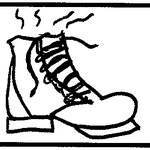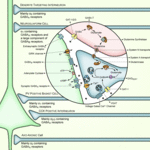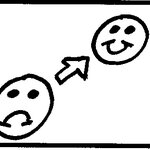Neuroscience

For many hundreds of years, people in Eastern Europe have treated epileptic seizures with the quick administration of shoe smell. This smell (and specifically this smell) has the power to arrest the seizure, or so says the folk wisdom.
Fact or fiction?
If the brain were a boxing glove, the temporal lobe would be the thumb (your brain actually has two of these “thumbs”, one on either side). The temporal lobe is the home of memory, speech and hearing, and also houses the olfactory cortex, where we process smell. When the temporal lobe seizes, as it might during an epileptic incident, the…

Scientific Blogging has a post up, as does Science Daily, that just gets it wrong. Here's where it seems to have gone wrong: the original press release.
Glitches happen (like not being able to get a comment on to the Scientific Blogging post), and errors do, as well. To the best of us.
This one, though, needs to be fixed, and it's one that's gone out to places like Science Daily, as well. Here, on an article by the news staff, it's reported "According to her research at the Autism Center at the Assaf Harofeh Medical Center in Israel, which Zachor directs, 10.5% of…

Men will sometimes blame hormones for how women act but it isn't just one gender - one thing that sets off hormone changes in men is competition, says a new PNAS study.
The average man experiences hormone changes similar to the henpecked bonobo prior to competition, but a more competitive man undergoes changes more like those found in a chimpanzee, say researchers from Duke and Harvard universities. Chimpanzees live in male-dominated societies where status is paramount and aggression can be severe but in bonobo culture a female is always the most dominant and tolerance can allow for…

Inhibition in the brain seems simple but there is an underlying complexity that makes it one of the most challenging aspects of brain function to understand. Its kind of like soccer, it seems to be a simple game, but it is difficult to play simple.
The main inhibitory neurotransmitter at synapses in the cerebral cortex is gamma-Aminobutyric acid or GABA. This small molecule plays a crucial role in how the brain functions and the tiny inhibitory synapses are the targets of alcohol, barbiturates, and benzodiazepines such as Valium.
But until recently we did not know very much…

Lithium has been used for more than 50 years in the treatment manic depression, clinically termed bipolar disorder, though no one is sure why it has been beneficial.
Don't be concerned. We don't know why aspirin works either, but we still use it.
Still, science mysteries are going to be pursued and new research from Cardiff University suggests a possible mechanism for why Lithium works, opening the door for better understanding of the illness and potentially more effective treatments.
Laboratory studies with cells have shown that an enzyme known as prolyl oligopeptidase (PO)…
Some estimates claim that within the first week after giving birth, up to 70 percent of women experience symptoms of the 'baby blues' - obviously a different thing than clinical postpartum depression, which perhaps 13 percent of new mothers show symptoms of having and is defined as a major depressive episode starting within 4 weeks after delivery.
Milder postpartum blues are obviously a major risk factor for developing postpartum depression and severe postpartum blues symptoms can be viewed as a prodromal stage for postpartum depression, say researchers, and in a new paper they reveal an…

Babies can grasp information about numbers, space and time before they can speak, and they do so in more complex ways than previously realized, according to new research.
In 1890 William James wrote in "The Principles of Psychology" that the baby's impression of the world as "one great blooming, buzzing confusion." But modern evidence indicates otherwise.
Babies understand quantity quite well, say Emory University psychologist Stella Lourenco and University College London neuroscientist Matthew Longo, and so much earlier than thought.
Lourenco focuses on the development of…

In vitro fertilization (IVF) resulted in the first 'test tube baby' in 1978 and now an estimated 1% of all American babies born each year has happened thanks to in vitro fertilization - wonderful for parents with reproductive issues but IVF and other assisted fertility treatments may be creating one problem by solving another, according to new research from Tel Aviv University.
In a recent study presented last month at the International Meeting for Autism Research in Philadelphia, Dr. Ditza Zachor of Tel Aviv University's Sackler School of Medicine reported a strong link between IVF and…

If you're thirsty and you drink, your brain feels pleasure. You feel this same pleasure, borne of satisfying a physical need, when someone you envy is brought low. We call this feeling schadenfreude, but researchers at the National Institute of Radiology in Japan call it dopamine release in the ventral striatum.
As you might imagine, the thirstier you are, the more dopamine released when you drink. The same is true of schadenfreude: the more envious you are, the more your brain likes it when the target of your envy falls on his/her face. Only after our cerebral cortex steps in to evaluate…

Sexsomnia may be more common than previously believed and is more common in men than women, according to new research presented today at SLEEP 2010. Their results indicate that 7.6 percent of patients (63 of 832) at a sleep disorders center reported that they had initiated or engaged in sexual activity with a bed partner while still asleep.
The prevalence of reported sexsomnia was nearly three times higher in men (11 percent) than in women (four percent).
The International Classification of Sleep Disorders, Second Edition, notes that sexsomnia appears to occur predominantly…